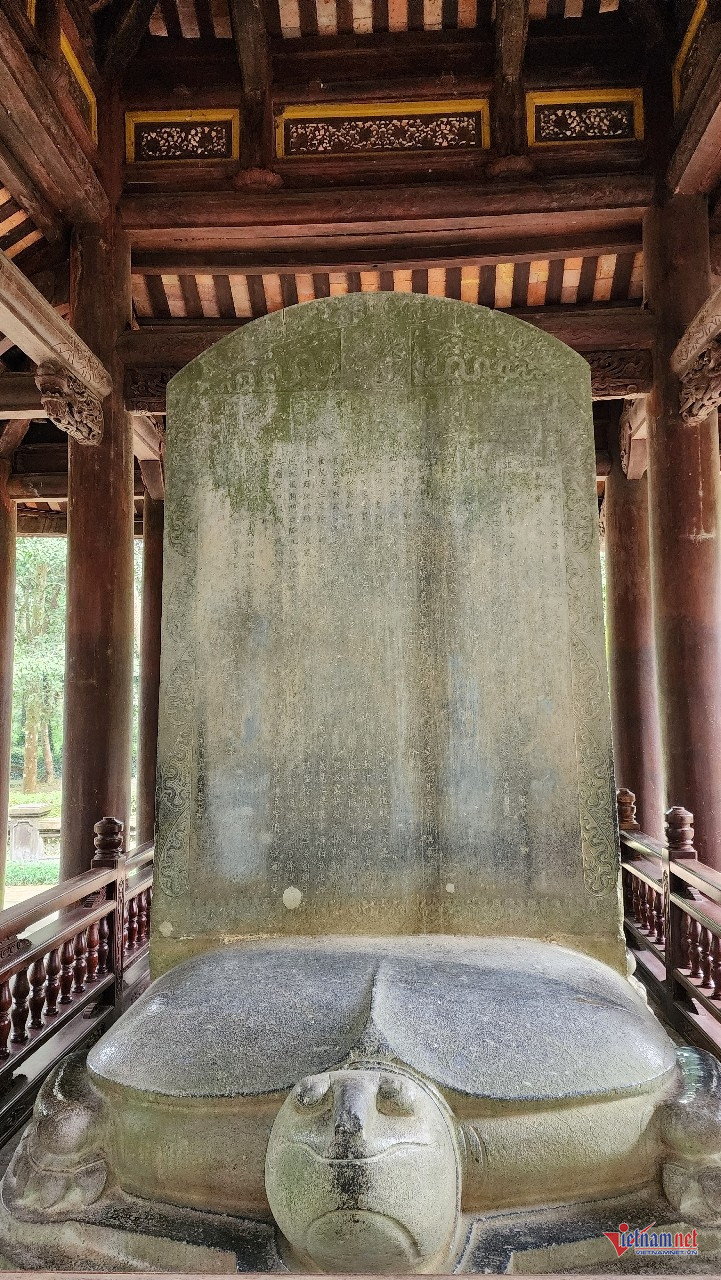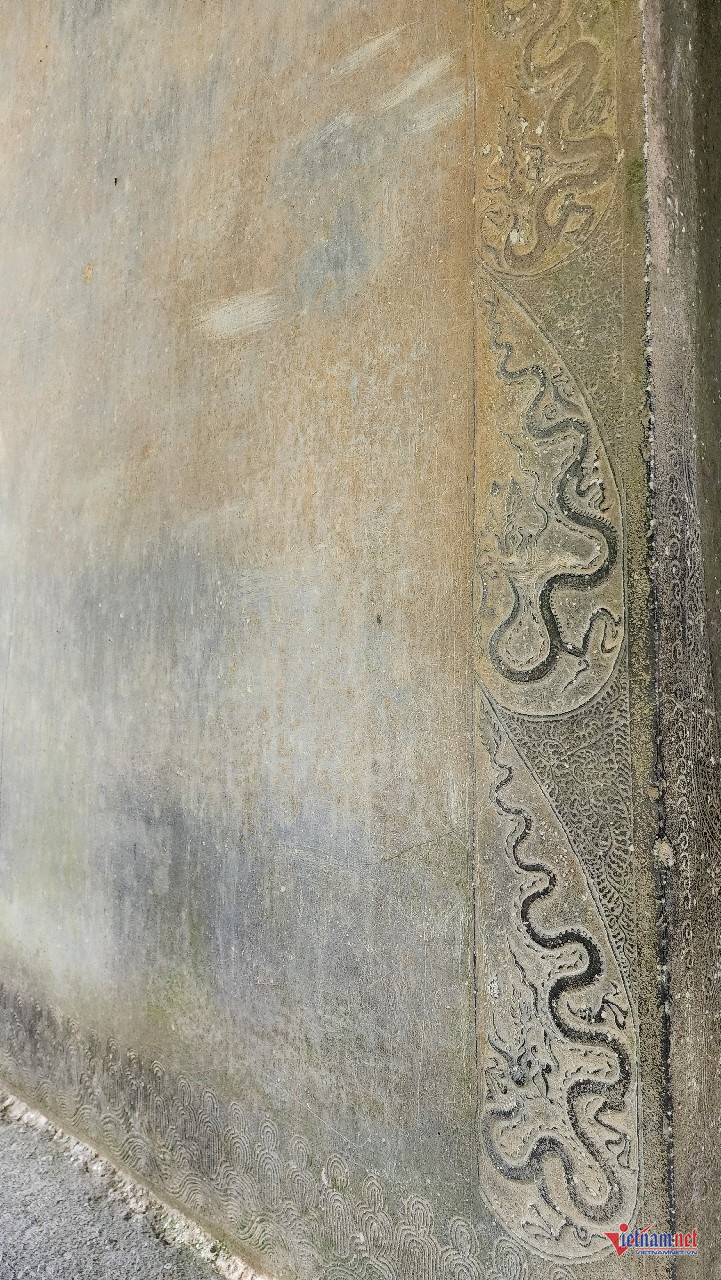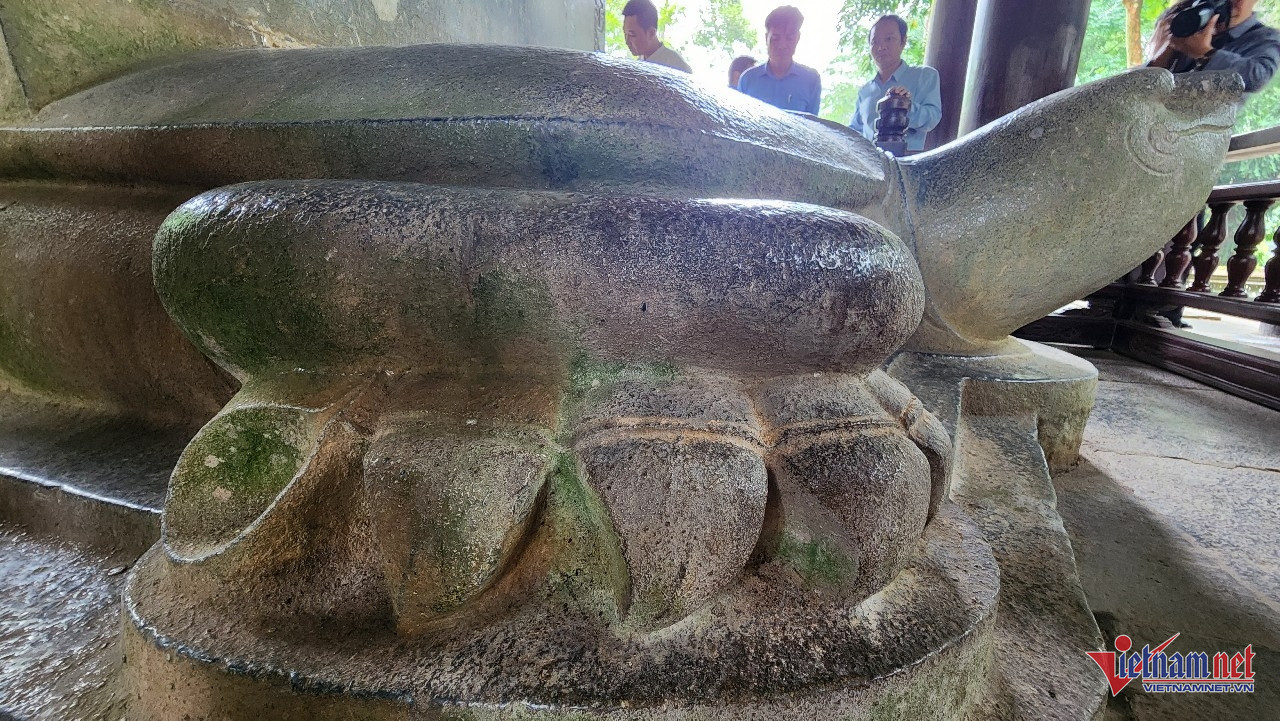Tinh Le
The Vinh Lang Stele, a recognized national treasure located in the Lam Kinh historical site (Thanh Hoa Province), is a priceless artifact showcasing the exquisite decorative and sculptural artistry of the early Le dynasty, while also serving as a source of cultural and historical education.
Visitors to Lam Kinh cannot miss the Vinh Lang Stele, situated 300 meters southwest of the central hall and close to the tomb of King Le Thai To. This 18-ton stone stele comprises two sections: a rectangular tablet above and a turtle base below, both crafted from gray-green sedimentary stone speckled with white. The surface of the stele and turtle still bears remnants of shell fossils.
The inscriptions on the stele provide a concise account of King Le Thai To’s life, achievements, and virtuous deeds. It reflects the strategic brilliance and resilience of the Lam Son insurgent forces during their decade-long resistance (1418–1428) against Ming invaders, culminating in Vietnam’s independence.
The rectangular stele rests atop the turtle’s back, with its arched crest adorned with intricate carvings. At the center of the front face is a square enclosing a circular motif, within which a five-clawed dragon is prominently featured. Flanking the crest are carvings of two dragons coiled around circular medallions, their heads rising majestically.
The stele’s borders are outlined by two parallel ridges extending from the crest to its base. Between these ridges are nine lotus-petal motifs, each enclosing a delicately sculpted dragon with scales, undulating bodies, and heads poised upward, exhaling a pearl. These motifs alternate with floral designs, adding to the stele’s intricate beauty.
A rare six-clawed turtle
The turtle supporting the stele is unique, with a notable departure from natural turtle anatomy: it has six claws on each foot. Typically, turtles only have five claws. The six claws are crafted with five in relief and one carved into the stone.
The turtle is depicted in a swimming pose, its head raised, back arched, and tail gently curled onto its shell. The underbelly features three finely carved ridges that extend along the base. These details were meticulously created using traditional hand-sculpting techniques.
This rare feature has sparked curiosity among visitors and scholars alike, leading to various interpretations of its symbolism.
Some researchers suggest the six claws represent King Le Thai To’s six-year reign, while others, such as Professor Ha Minh Duc, view the imagery as a profound philosophical message: “What is borrowed must be returned.”
The depiction may serve as a moral lesson about integrity and responsibility, echoing the cautionary tale of An Duong Vuong, who failed to repay his debts, leading to his downfall. By contrast, the Le dynasty adhered to this principle, reigning for 354 years, the longest of any Vietnamese feudal dynasty.
A legacy rooted in Lam Kinh
Historical records indicate that Lam Kinh, formerly known as Lam Son, was the homeland of Le Loi, a national hero and founder of the Lam Son uprising.
After a decade of resistance against the Ming, Le Loi ascended the throne in 1428, establishing the Later Le dynasty, which endured for 360 years (1428–1788).
A few years into his reign, Le Thai To renamed Lam Son to Tay Kinh (Western Capital). Lam Kinh then became a focal point for the Le monarchs. In 1433, Le Thai To passed away in Dong Kinh (present-day Hanoi) and was buried in his hometown, where his mausoleum and stele were erected. Subsequent rulers transformed Lam Kinh into a royal necropolis, the resting place of numerous Le kings and empress dowagers.
Today, the Lam Kinh site retains six tombs and five stone stelae, weathered by time and historical upheavals but continuing to stand as enduring symbols of Vietnam’s rich heritage.



